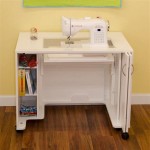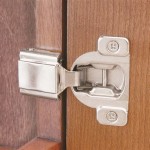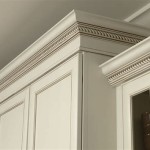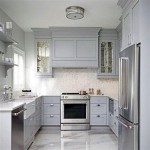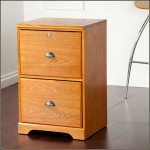How To Remove Grease From Kitchen Cabinets, Wooden Handles, And Knobs
Kitchen cabinets, especially those near the stove, often accumulate a stubborn layer of grease, grime, and food splatters. Wooden handles and knobs, due to their porous nature and constant handling, are particularly susceptible to this buildup. Neglecting regular cleaning can lead to sticky surfaces, unsightly discoloration, and a breeding ground for bacteria. Effective grease removal requires understanding the appropriate methods and cleaning solutions that won't damage the wood finish. This article provides a comprehensive guide to cleaning grease from kitchen cabinets, wooden handles, and knobs, covering various cleaning techniques and preventative measures to maintain a clean and hygienic kitchen.
Understanding the Nature of Kitchen Grease and Its Impact
Kitchen grease is a complex mixture composed primarily of fats, oils, and food particles released during cooking. When heated, these substances become airborne and settle on surrounding surfaces, including cabinets and handles. Over time, this greasy film hardens, attracting dust and dirt, creating a difficult-to-remove layer. This buildup is not merely an aesthetic concern; it can degrade the cabinet finish, attract pests, and compromise kitchen hygiene. The porous nature of wood further exacerbates the problem, as grease can penetrate the surface, making removal more challenging.
The type of wood and its finish also influence the cleaning approach. Cabinets with a durable, glossy finish are generally easier to clean than those with matte or distressed finishes, which are more prone to absorbing grease. Using harsh chemicals or abrasive scrubbers on delicate wood finishes can cause irreparable damage, including scratching, discoloration, and the removal of the protective coating. Therefore, it is crucial to choose cleaning methods that are both effective at removing grease and gentle on the wood surface.
Regular cleaning is the most effective way to prevent severe grease buildup. Wiping down cabinets and handles after cooking can significantly reduce the amount of grease that accumulates over time. This proactive approach minimizes the need for intensive cleaning and preserves the appearance and longevity of the kitchen cabinetry.
Effective Grease Removal Methods and Cleaning Solutions
Several cleaning methods and solutions are effective for removing grease from kitchen cabinets and wooden hardware. These methods range from mild, natural options to more potent commercial cleaners, each with its own set of advantages and considerations. It is always recommended to test any cleaning solution on an inconspicuous area of the cabinet before applying it to the entire surface to ensure it does not cause damage or discoloration.
1. Warm Water and Dish Soap: This is the gentlest and often the most effective method for removing light to moderate grease buildup. Combine warm water with a few drops of mild dish soap in a bucket or spray bottle. Use a soft cloth or sponge to apply the solution to the greasy surfaces, gently scrubbing in a circular motion. Rinse the cloth frequently in clean water to avoid spreading the grease. After cleaning, wipe the surfaces dry with a clean, dry cloth.
2. Baking Soda Paste: Baking soda is a natural abrasive and deodorizer that can effectively remove grease without damaging most wood finishes. Create a paste by mixing baking soda with a small amount of water until it forms a thick consistency. Apply the paste to the greasy areas and let it sit for a few minutes to allow the baking soda to loosen the grease. Gently scrub the paste with a soft cloth or sponge, then rinse thoroughly with clean water. Ensure all traces of baking soda are removed to prevent a white residue from forming.
3. Vinegar Solution: Vinegar is a natural degreaser and disinfectant. Mix equal parts white vinegar and warm water in a spray bottle. Spray the solution onto the greasy surfaces and let it sit for a few minutes. Wipe the surfaces clean with a soft cloth or sponge. The vinegar smell will dissipate quickly, but it can be neutralized by adding a few drops of essential oil, such as lemon or lavender, to the solution.
4. Commercial Degreasers: Numerous commercial degreasers are available specifically formulated for kitchen surfaces. When using these products, carefully read and follow the manufacturer's instructions. Always test the product on an inconspicuous area first to ensure it does not damage the cabinet finish. Wear gloves and eye protection to avoid skin and eye irritation. Choose a degreaser that is specifically designed for wood surfaces to minimize the risk of damage.
5. Steam Cleaning: Steam cleaners can effectively loosen grease and grime without the need for harsh chemicals. The hot steam penetrates the grease, making it easier to wipe away with a clean cloth. When using a steam cleaner, keep the nozzle moving to avoid concentrating the heat on one spot for too long, which could damage the wood finish. Steam cleaning is particularly effective for cleaning intricate details and hard-to-reach areas.
For wooden handles and knobs, which are often heavily soiled, removal and soaking in a cleaning solution can be beneficial. After removing the hardware, soak it in a solution of warm water and dish soap or vinegar for a few minutes to loosen the grease. Use a small brush, such as a toothbrush, to scrub the hardware clean, paying attention to crevices and intricate details. Rinse thoroughly with clean water and allow to dry completely before reattaching to the cabinets.
Step-by-Step Grease Removal and Preventative Measures
The process of removing grease from kitchen cabinets and wooden hardware involves several steps to ensure effective cleaning and prevent damage. Following a structured approach maximizes the cleaning effectiveness and minimizes the risk of harm to the wood finish.
Step 1: Preparation: Before beginning the cleaning process, gather all necessary supplies, including cleaning solutions, soft cloths, sponges, a bucket or spray bottle, a small brush, gloves, and eye protection. Protect the surrounding surfaces, such as countertops and floors, with drop cloths or towels to prevent spills and drips.
Step 2: Testing: Test the chosen cleaning solution on an inconspicuous area of the cabinet, such as the inside of a door or drawer. Allow the solution to sit for a few minutes, then wipe it clean and observe the area for any signs of damage, discoloration, or finish removal. If no adverse effects are observed, proceed with cleaning the entire surface.
Step 3: Cleaning the Cabinets: Apply the cleaning solution to a soft cloth or sponge and gently wipe the greasy surfaces in a circular motion. Avoid applying excessive pressure, which could damage the finish. For stubborn grease buildup, allow the cleaning solution to sit on the surface for a few minutes before wiping it away. Rinse the cloth frequently in clean water to avoid spreading the grease.
Step 4: Cleaning the Wooden Handles and Knobs: If possible, remove the handles and knobs from the cabinets. Soak them in a solution of warm water and dish soap or vinegar for a few minutes to loosen the grease. Use a small brush to scrub the hardware clean, paying attention to crevices and intricate details. Rinse thoroughly with clean water and allow to dry completely before reattaching to the cabinets.
Step 5: Rinsing and Drying: After cleaning the cabinets and hardware, rinse all surfaces with clean water to remove any remaining cleaning solution. Use a clean, dry cloth to wipe the surfaces dry. Pay attention to edges and corners, where moisture can accumulate. Ensure all surfaces are completely dry to prevent water damage and the growth of mold or mildew.
Step 6: Preventative Measures: Regular cleaning is the most effective way to prevent severe grease buildup. Wipe down cabinets and handles after cooking to remove any grease splatters or food residue. Use a range hood or exhaust fan while cooking to vent steam and grease away from the cabinets. Consider applying a coat of furniture polish or wax to protect the cabinet finish and make it easier to clean in the future. Avoid using abrasive cleaners or scrubbers, which can damage the wood finish. Address spills and splatters promptly to prevent them from hardening and becoming more difficult to remove.
By implementing these cleaning methods and preventative measures, kitchen cabinets and wooden hardware can be effectively maintained, ensuring a clean, hygienic, and aesthetically pleasing kitchen environment. Regular maintenance not only preserves the appearance of the cabinetry but also extends its lifespan, protecting the investment in the kitchen's functionality and aesthetics.

How To Clean Kitchen Cabinets Everyday Skate

Tips For Getting The Grime Off Your Kitchen Cabinets

Get Grease Off Kitchen Cabinets Easy And Naturally

How To Clean Kitchen Cabinet Hardware And Knobs

Get Grease Off Kitchen Cabinets Easy And Naturally

How To Clean Kitchen Cabinets Remove Stickiness Grease Clorox

How To Clean Grimy Kitchen Cabinets With 2 Ingredients
How To Clean Greasy Kitchen Cabinet Handles Quora

Remove Grease And Grime Easily How To Really Clean Oak Kitchen Cabinets Cleaning Wood

How Do I Clean My Cabinets Dean Cabinetry
Related Posts

